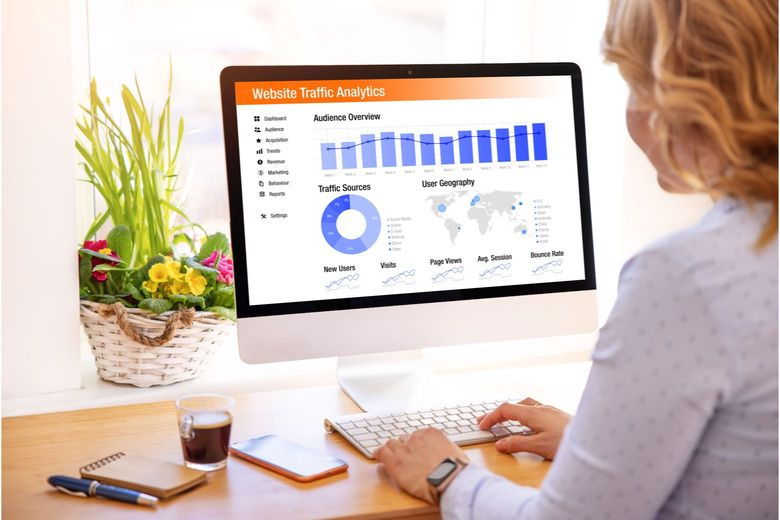
Alex McGibbon24/10/22
5 min read

When it comes to planning and designing a charity website or even producing your marketing and content plans, it’s vital you spend some time considering who your online audience is. You’ll need to understand things like who they are, where they are, how old they are, what they like and dislike, why they have arrived to your website and how you can help them from that point.
Why? Because once you know who your audience really is, you can strategically develop your website and streamline your content to meet their differing needs. Not only will you create a genuinely helpful, enjoyable user experience, but all that finely tuned, relevant content you produce will naturally boost your organic SEO rankings too. The end result? More high-quality leads coming in, a greater revenue for your charity and more time for you to do what really matters.
Here’s what we’ll be covering in today’s article:

Let’s start by thinking about your existing audience types and their differing needs. You can gather a lot of initial information from your own organisation by speaking to colleagues, reviewing and feedback forms or survey results, and looking at social media interactions. These will help you gain a good general understanding of who your audience is, and how they’ve come to be involved with your charity. Information you can gather from these resources might include:
When you start to monitor the words and actions taken by the audience already interacting with your organisation, you can really get inside their heads to understand their behaviours. Their experiences – both good and bad – all tell a story which will help you to identify any existing pain points and work with them. Following this analysis with more focused research, such as sending out questionnaires or carrying out in-depth interviews with carefully selected individuals, would help bring these audiences to life and deliver a richer, more detailed understanding of their needs. Once you start to notice patterns in your audience’s actions or requirements, you can tailor your charity website development around them.

If you try to cater equally for everybody then you’ll risk spreading yourself too thinly. To help identify and prioritise those who are critical to your online success, you’ll need to look at the existing data you have available to inform and justify. Starting points include Google Analytics, CRM data and any hotjar-type results you have – including heat maps, recordings and funnels.
Once you have this information in front of you, you’ll be able to identify where your audience is navigating to, any challenges or pain points that could be causing them to get stuck or drop off, the most effective paths to your calls to action, and what content seems most effective or important to them.
Tip: Your charity website agency should be able to help you thoroughly review and analyse your existing data as part of your site development.
Creating personas is an incredibly useful way to ensure your organisation is producing effective, targeted content for your key audiences. If you don’t already use personas, this is the ideal time to familiarise yourself with the process.
By using the information from your reviews, surveys and data analysis and interviews, you can create a number of personas with each one having a unique want, need or objective. There could be many different ones depending on how many platforms and services your charity offers.

The personas should each integrate your audience’s aims, requirements and pain points. Think about their challenges and motivations, what are they trying to achieve or wanting to know? Do they have any accessibility needs that might need to be considered? Once you have created your personas, make sure you refer back to them as you plan and develop your content to ensure you are catering for each type.
Tip: Carry out research and interviews where possible to really bring your personas and audience types to life.
After spending all that time understanding who your audience is and what they want from you, you can now tailor your platform to them.
You can shape your charity's website design to meet their needs by considering where they will arrive on your site and how they get to the information they need. You also need to consider what action you want them to take once they find the information they need. This is called user journey planning. Think back to your personas: what is the end goal for each one? The faster and easier you make their user-experience (UX), the better results you are likely see down the line in terms of engagement, donations and sign-ups.
Remember, your audience is likely to consist of supporters or beneficiaries of your organisation, so they’ll want to help you achieve success. You can utilise that support of your existing audience to help test out new ideas for your charity website development in the research stage.
Try using social media and online feedback forms to open a dialogue with your audience. Engage with them and encourage interaction; try asking them what information they’d like to access and what features they’d find helpful on your site. Showing your audience that their opinions are being considered and valued is all part of your relationship-building and site evolvement.
Considering your audience profile will also be key when you come to enriching your content with media. Are you talking to a predominantly younger or older age group? Consider your data, are they web savvy, or do they need a little more handholding to navigate their way through?

Have a think about your tone of voice and how your audience will best respond to the way you speak to them. In day-to-day conversations the language we use naturally changes depending on who we are speaking to. If you’re speaking to a very broad audience, a friendly, helpful tone is usually preferred. You’ll also need to consider what terminology and phrasing you’re using. Will your audience understand it without providing an explanation?
The tone-of-voice you choose for your audience will help you decide whether you want tug-at-the-heart-strings images to accompany your words, or factual video tutorials to explain and elaborate. If your personas indicate your audience is time-poor and keen to get straight to the end goal, they might have a preference for helpful infographics and short snappy video clips, with an aversion to copy-heavy pages.
Of course, your data will largely lead you in terms of what your audience wants, and there may already be some indication there as to what media is working already. If not, try running tests of varying levels and types of media on your pages to see what gets the best results.
As you progress through your charity website development, keep testing and evaluating throughout the process with user testing and/or surveys. Keep referring back to your personas to really refine the user experience and have the best chance of success. After launch, continue to test and identify any issues or pain points that can be rectified. Remember to engage with your audience and ask for feedback – their first-hand experience of your new site will be invaluable.
Taking the time to create a tailored user-experience for your key audience isn’t just good practise – it’s central to helping you achieve your digital goals and get great results. By making the most of your online presence, you can tempt your visitors to stay on your site longer, respond to your call to actions and return in the future. In time you’ll notice an organic growth in your supporter base too, with recommendations to friends and family.
From writing a blog post to designing a striking landing page or developing a new campaign site, the theory is the same. Knowing and understanding your audience will help you get the most from your projects – and from your followers.
Looking for support developing your charity website? Speak to our team to find out how we can support your organisation.